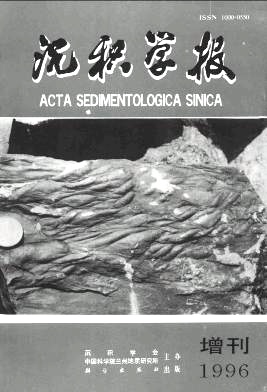Geochemical Characteristics and Significance of the Pyrolysis Oil from Pinus Pollen Grains
- Received Date: 1995-04-12
- Publish Date: 1996-12-31
-
Key words:
- pineal pollen /
- thermal simulation /
- light hydrocarbon /
- thermal evolution
Abstract: This paper studed the thermally simulated oils from Pinus pollen grains by GC, GC-MSand so on. The results showed that sporopollen is a kind of good terrigenous oil-generating material. The main composition of the pyrolysis oils is aromatic hydrocarbons with subordinate saturated hydrocarbons subordinate. The low-temperature pyrolysis stage (400℃) is characterized by generating large amount of saturated hydrocarbons, and the high-temperature stage (400℃), aromatic hydrocarbons. As for the aromatic hydrocarbons, monocyclic and dicyclic ones are their main components.Normal alkanes are the most abundant compounds of the thermally decomposed oils, the carbon number distribution is from C4 to C28, and C12 is the highest peak in the most cases.The gas-chromatogram spectra of the oils in the high temperature stage are distributed in a form of double-peaks. The former peak is even-carbon domination and the latter one, an order-carbon domination. The light hydrocarbon chromatographic parameters, e. g., nC6/iC6,nC7/iC7, nC6/cC6 etc. decrease with the increase of pyrolysis temperature and reach to the maximum at 450℃ (R0=1. 88). Then all the ratios mentioned above decrease with the continuous increase of the temperature, so the point at 450℃ may be thought as the upper limit of the high peak oilgeneration. The content of C15+ heavy hydrocarbons is greater than that of C15- light hydrocarbons in the low-temperature stage, contrarily in the high-temperatue stage the light hydrocarbons are abundant. That is to say that sporopollen can generate oils in which either heavy hydrocarbons or light ones can be the main components, just depending on the different pyrolytic temperatues. It shows, furthermore, that the material of higher plant origins can generate both gases and oils.Besides n-alkanes, there are higher contents of alkyl-benzene series, alkyl-cycloherane series, alkyl-cyclopentane series and alkyl-phenol series in the thermals simulated oils. The carbon number distribution is C7-C21 for the former three series, and C7-C11 for the latter one.All of those series are common components of Petroleum, it means that sporopollen is a kind of widespread Oil-source materials. The compounds with phenol structure are one of the characteristics of higher plants, thus the detection of the phenol structure compounds in the pyrolysis oils from Pinus pollen supplies a direct evidence for those kinds of compounds derived from higher plants in continental oils.The parameters of Pr/Ph, Pr/nC17 and Ph/nC18 ratios vary to a great degree at different temperature stages. It is shown that those parameters may greatly change in different maturestages even though organic materials are of the same kind. So the mature stages must be considered when those parameters mentioned above are used to classify sedimentary environments of source rocks.
| Citation: | Ji Liming, Tuo Jincai. Geochemical Characteristics and Significance of the Pyrolysis Oil from Pinus Pollen Grains[J]. Acta Sedimentologica Sinica, 1996, 14(S1): 115-121. |






 DownLoad:
DownLoad: